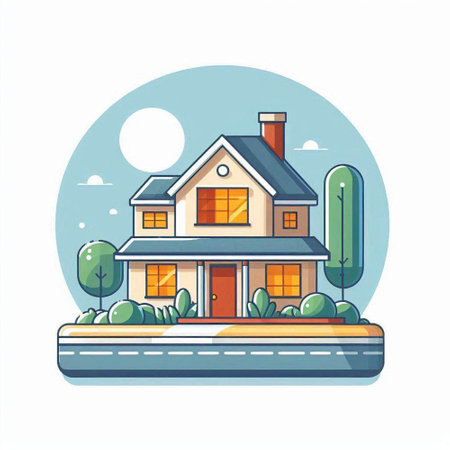Understanding Your Smart Lighting System
Before diving into troubleshooting smart lighting issues, its important to first understand how your smart lighting system works. A typical setup includes a few key components that need to work together smoothly. Knowing what each part does will make it easier to identify and fix problems when they arise.
Main Components of a Smart Lighting System
Your smart lighting system is made up of several parts that communicate with each other. Heres a breakdown of the most common components:
| Component | Function |
|---|---|
| Smart Bulbs | These are LED bulbs with built-in wireless technology (Wi-Fi, Zigbee, or Bluetooth). They can be controlled remotely via an app or voice assistant. |
| Hubs or Bridges | Some systems require a hub (like Philips Hue Bridge) that acts as a middleman between your bulbs and Wi-Fi network. It helps ensure stable connections and more advanced features. |
| Mobile Apps | The app lets you control lights, set schedules, adjust brightness, and check connectivity status. It’s also where you connect new devices. |
| Voice Assistants | Devices like Amazon Alexa, Google Assistant, or Apple HomeKit let you control lights using voice commands. These need to be linked properly through the app. |
How These Components Work Together
Your smart bulb receives commands either directly from your phone (if it uses Wi-Fi or Bluetooth) or through a hub. The mobile app sends those commands over your home network, and if youre using a voice assistant, it also routes through your Wi-Fi connection. If any link in this chain fails—like weak Wi-Fi or an outdated app—you might experience issues like delayed responses or disconnections.
Example Setup:
- You say “Turn on the living room lights” to your smart speaker.
- The voice assistant processes the command and sends it to the mobile app.
- The app communicates with the hub (if used), which then signals the correct bulb to turn on.
Tip:
Keep all components updated with the latest firmware and software versions. This helps avoid many common bugs and ensures better compatibility across devices.
2. Checking Power and Physical Connections
Before diving into complex troubleshooting, start with the basics—make sure your smart lighting devices are actually getting power and all physical connections are secure. It might sound simple, but many connectivity issues can be traced back to something as basic as a loose bulb or an unplugged hub.
Confirm Power Supply
Check that all your smart light bulbs, switches, and hubs are receiving power. Here are a few quick steps to verify:
| Device | What to Check |
|---|---|
| Smart Bulbs | Ensure the light switch is turned on and the bulb is tightly screwed in. |
| Smart Plugs | Make sure the plug is fully inserted into the wall outlet and powered on. |
| Smart Hubs/Bridges | Verify that the hub is plugged in and any indicator lights show its working properly. |
Inspect Physical Connections
If you’re using a wired setup, like Ethernet-connected smart hubs or hardwired smart switches, double-check that all cables are securely connected and not damaged. For Wi-Fi-based devices, confirm they’re within range of your router.
Common Physical Connection Issues
- Loose light bulbs: Make sure bulbs are firmly screwed into their sockets.
- Wall switches off: Traditional switches must remain ON for smart bulbs to receive power.
- Tripped circuit breakers: If multiple devices go offline, check your breaker panel.
- Unplugged hubs: Confirm that no one accidentally unplugged your smart hub or bridge.
Tip: Use Manual Controls First
If your device has a manual control option (like a button on a smart plug or hub), try turning it on manually. This can help determine if the issue is with power or connectivity. If it doesn’t respond manually, there’s likely a power issue to address first.
Troubleshooting Power at a Glance
| Symptom | Possible Cause | Suggested Fix |
|---|---|---|
| No response from bulb | Bulb not receiving power | Screw bulb in tighter, ensure wall switch is ON |
| Hub offline in app | No power to hub or disconnected network cable | Check power cord and Ethernet connection (if applicable) |
| No lights working in one room | Circuit breaker may be tripped | Check breaker box and reset if needed |
Taking just a few minutes to double-check these physical aspects can save you a lot of time and frustration later on when trying to fix what appears to be a connectivity issue but is really just a power problem.

3. Troubleshooting Wi-Fi and Connectivity Issues
Smart lighting systems rely heavily on a stable Wi-Fi connection to function properly. If your lights are unresponsive, delayed, or disconnect frequently, the issue might lie with your network rather than the bulbs themselves. Let’s look at some common Wi-Fi problems and how to fix them.
Common Wi-Fi Issues That Affect Smart Lighting
Here are some typical connectivity problems that can interfere with smart lighting performance:
| Issue | Description | Possible Fix |
|---|---|---|
| Weak Signal Strength | Your smart bulbs may be too far from the router, causing slow or lost connections. | Move bulbs closer to the router or use a Wi-Fi extender. |
| Network Interference | Other electronic devices like microwaves or cordless phones can interfere with your Wi-Fi signal. | Avoid placing the router near other electronics; switch to a different frequency band. |
| Crowded Network | If many devices are connected to your network, bandwidth may be limited for smart lighting. | Disconnect unused devices or upgrade your internet plan. |
| Mismatched Frequency Bands | Some smart lights only work on 2.4GHz networks, not 5GHz. | Create a separate 2.4GHz network or temporarily disable 5GHz during setup. |
Steps to Improve Wi-Fi Performance for Smart Lights
If you suspect your connectivity issues stem from your home network, try these simple steps:
Reset Your Router
This is often the first thing to try. Unplug your router for about 30 seconds and then plug it back in. This refreshes the connection and may resolve temporary glitches.
Switch Frequency Bands
If your router supports dual-band (2.4GHz and 5GHz), make sure your smart bulbs are connected to the correct one. Most smart lighting systems require a 2.4GHz connection because it has better range through walls and objects.
Add a Wi-Fi Extender or Mesh System
If certain areas of your home have poor signal strength, consider using a Wi-Fi extender or upgrading to a mesh system to ensure even coverage throughout your home.
Reposition Devices for Better Signal
Avoid placing routers behind furniture or inside cabinets. Place them in an open central location for the best coverage. Similarly, avoid installing smart bulbs in metal fixtures or enclosed spaces that can block signals.
Troubleshooting Tip:
You can use free smartphone apps like “WiFi Analyzer” (Android) or “AirPort Utility” (iOS) to check signal strength in different parts of your home and find dead zones.
Taking time to optimize your home network can make a big difference in the reliability of your smart lighting system. Once you’ve addressed these connectivity issues, you’ll likely see faster response times and fewer disconnections.
4. Syncing and Reconnecting Devices
If your smart lights suddenly go offline or stop syncing with your smart home app, don’t worry—it happens more often than you think. These issues can usually be fixed with a few basic troubleshooting steps. Whether it’s a connectivity hiccup or a device glitch, here’s how to get your smart lighting back on track.
Common Reasons Devices Lose Connection
- Wi-Fi signal is weak or unstable
- Device firmware is outdated
- Your router recently rebooted or changed settings
- The smart light was manually turned off via a wall switch
- App or cloud service has temporary issues
Step-by-Step: How to Reconnect Your Smart Lights
1. Check Your Wi-Fi Network
Make sure your phone and smart light are both connected to the same Wi-Fi network. If possible, use a 2.4GHz band, as many smart bulbs don’t support 5GHz.
2. Power Cycle the Device
Turn the smart light off and then on again. If its a bulb, screw it out and back in. Wait a few seconds and see if it reconnects automatically.
3. Use the App to Re-Sync
Open your smart home app (like Google Home, Alexa, or SmartThings) and look for a “Reconnect” or “Resync” option under the device settings.
4. Perform a Factory Reset (if needed)
If the light still won’t connect, you might need to do a factory reset. This process varies by brand—here’s a quick reference:
| Brand | Reset Method |
|---|---|
| Philips Hue (without Bridge) | Turn bulb on/off 6 times quickly |
| LIFX | Switch power on/off 5 times until it flashes colors |
| Kasa Smart (TP-Link) | Hold reset button for 5 seconds until LED blinks rapidly |
| Sengled | On/off cycle the bulb 10 times until it flashes three times |
5. Remove and Re-Add the Device in the App
If resetting doesn’t work, try removing the device from your app entirely, then set it up again as if it were new. This often clears out old data or broken connections that may be interfering.
6. Update Firmware
An outdated firmware can cause sync issues. Open your app and check for any available updates for your devices. Most apps will show an alert if an update is needed.
Troubleshooting Tips:
- Avoid placing lights too far from your router or hub.
- If using a hub, make sure it’s powered on and connected to Wi-Fi.
- If multiple devices are offline, reboot your router and hub first.
This should help bring your smart lighting system back online and communicating smoothly with your app again.
5. Ensuring Compatibility and Software Updates
One of the most common reasons smart lighting systems dont work properly is due to software or hardware incompatibility. Whether youre setting up a new smart bulb or trying to get your voice assistant to recognize your lights, making sure everything plays well together is essential.
Check Device Compatibility
Before buying any smart lighting product, double-check that its compatible with your existing ecosystem. For example, if youre using Amazon Alexa or Google Assistant, make sure the smart bulbs or switches you choose support those platforms.
Common Smart Home Platforms and Compatible Brands
| Smart Home Platform | Compatible Lighting Brands |
|---|---|
| Amazon Alexa | Philips Hue, TP-Link Kasa, LIFX, Sengled |
| Google Assistant | NanoLeaf, Wyze, Philips Hue, Govee |
| Apple HomeKit | Eve, Philips Hue (with Bridge), LIFX |
| Samsung SmartThings | Sylvania Smart+, Innr, Sengled |
Keep Apps and Firmware Up to Date
If your smart lights arent responding or are acting erratically, outdated software might be the issue. Many brands release regular updates to fix bugs, improve security, and add new features. Heres what you should update regularly:
- The smart lights firmware (usually updated through its mobile app)
- The controlling app on your phone or tablet (e.g., Hue app, Kasa app)
- Your smartphone’s operating system (iOS or Android)
- The firmware for any hubs or bridges youre using (like Philips Hue Bridge)
Troubleshooting Tip:
If a light suddenly stops working with your voice assistant after an update, unlink and re-link the device in the assistants app. This can often resolve syncing issues caused by mismatched software versions.
A Quick Checklist for Staying Updated:
| Task | Status Check |
|---|---|
| Smart Light Firmware Update | Use brand’s mobile app settings menu |
| Mobile App Update | Visit App Store or Google Play Store |
| Voice Assistant Update (Alexa/Google) | Their apps update automatically; check settings if needed |
| Router Firmware (if using Wi-Fi bulbs) | Log in to router admin panel to check for updates |
Taking just a few minutes each month to ensure everything is compatible and up-to-date can save you hours of frustration down the line. Smart lighting works best when all parts of the system are speaking the same language—updated and in sync.


